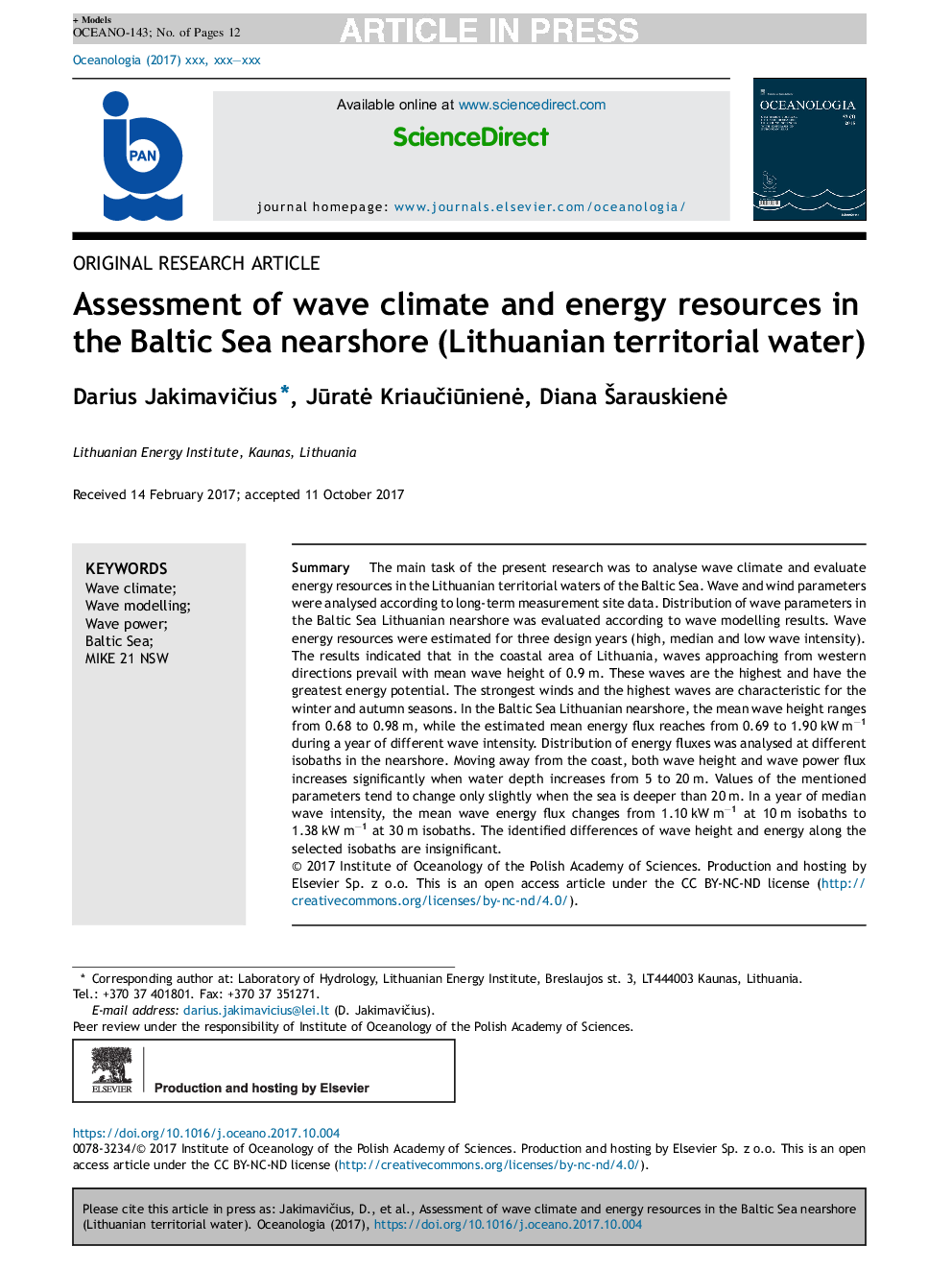| Article ID | Journal | Published Year | Pages | File Type |
|---|---|---|---|---|
| 8399835 | Oceanologia | 2018 | 12 Pages |
Abstract
The main task of the present research was to analyse wave climate and evaluate energy resources in the Lithuanian territorial waters of the Baltic Sea. Wave and wind parameters were analysed according to long-term measurement site data. Distribution of wave parameters in the Baltic Sea Lithuanian nearshore was evaluated according to wave modelling results. Wave energy resources were estimated for three design years (high, median and low wave intensity). The results indicated that in the coastal area of Lithuania, waves approaching from western directions prevail with mean wave height of 0.9Â m. These waves are the highest and have the greatest energy potential. The strongest winds and the highest waves are characteristic for the winter and autumn seasons. In the Baltic Sea Lithuanian nearshore, the mean wave height ranges from 0.68 to 0.98Â m, while the estimated mean energy flux reaches from 0.69 to 1.90Â kWÂ mâ1 during a year of different wave intensity. Distribution of energy fluxes was analysed at different isobaths in the nearshore. Moving away from the coast, both wave height and wave power flux increases significantly when water depth increases from 5 to 20Â m. Values of the mentioned parameters tend to change only slightly when the sea is deeper than 20Â m. In a year of median wave intensity, the mean wave energy flux changes from 1.10Â kWÂ mâ1 at 10Â m isobaths to 1.38Â kWÂ mâ1 at 30Â m isobaths. The identified differences of wave height and energy along the selected isobaths are insignificant.
Related Topics
Physical Sciences and Engineering
Earth and Planetary Sciences
Oceanography
Authors
Darius JakimaviÄius, JÅ«ratÄ KriauÄiÅ«nienÄ, Diana Å arauskienÄ,
